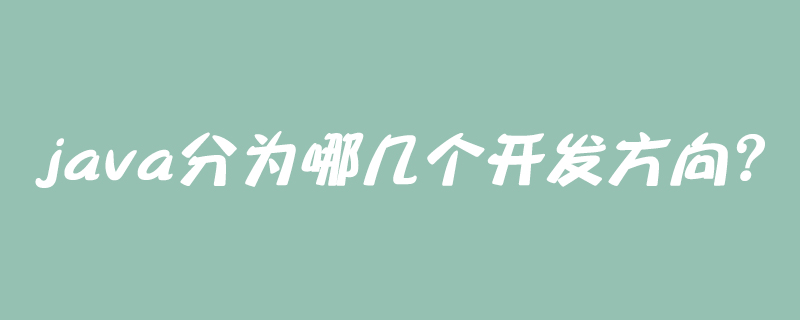Home >Java >javaTutorial >What are the development directions of Java?
What are the development directions of Java?
- 青灯夜游Original
- 2019-05-20 09:54:155028browse

Java development directions can be divided into three types: JavaSE (Java Standard Edition), JavaEE (Java Enterprise Edition), and JavaME (Java Micro Edition).
Java SE
Java SE (Java Platform, Standard Edition). Java SE was formerly known as J2SE. It allows the development and deployment of Java applications for use in desktop, server, embedded and real-time environments. Java SE contains classes that support Java Web services development and provides the foundation for Java Platform, Enterprise Edition (Java EE).
Java EE
Java EE (Java Platform, Enterprise Edition). This version was formerly known as J2EE. The Enterprise Edition helps develop and deploy server-side Java applications that are portable, robust, scalable, and secure. Java EE is built on the basis of Java SE. It provides Web services, component models, management and communication APIs, and can be used to implement enterprise-level service-oriented architecture (SOA) and Web 2.0 applications.
Java ME
Java ME (Java Platform, Micro Edition). This version was formerly known as J2ME. Java ME provides a robust and flexible environment for applications running on mobile and embedded devices such as cell phones, PDAs, television set-top boxes, and printers. Java ME includes a flexible user interface, a robust security model, many built-in network protocols, and rich support for networked and offline applications that can be downloaded dynamically. Applications based on the Java ME specification are written once and can be used on many devices, taking advantage of each device's native capabilities.
What should I use to develop small applications? It depends on what kind of application you are targeting. If it is targeting C/S, use javaSE. If it is targeting B/S, use javaEE. If it is targeting B/S, use javaEE. For mobile devices and embedded devices (such as mobile phones, PDAs, TV set-top boxes and printers), JavaME is used. Beginners usually learn javaSE first! !
The above is the detailed content of What are the development directions of Java?. For more information, please follow other related articles on the PHP Chinese website!

